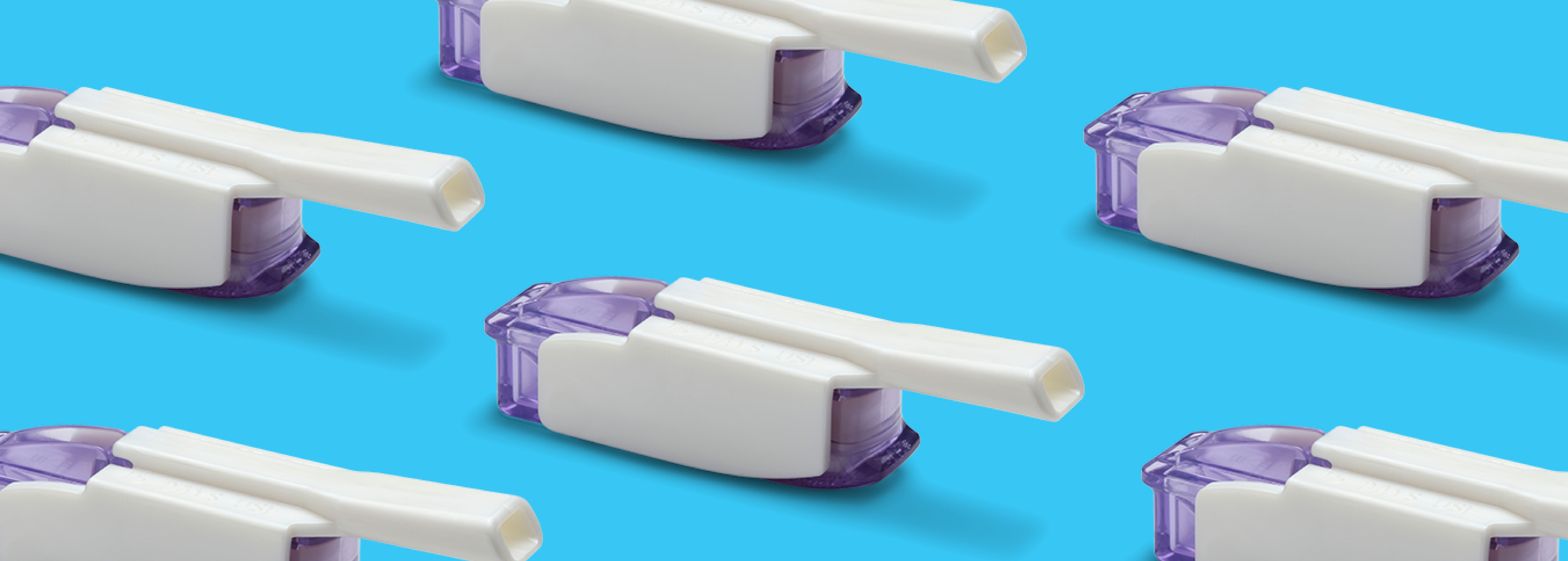Insulin & Temperature: Why It’s Really Important
Written by: Ginger Vieira
3 minute read
April 30, 2021
That powerful liquid that helps you stay healthy is actually quite sensitive to temperature. Not too hot and not too cold, a vial or pen of insulin is very picky about temperature.
Let’s take a closer look at keeping your insulin safe from hot and cold temperatures.
What is the right storage temperature for unopened insulin?
The ideal temperature for a vial or pen of insulin is between 36 to 46 degrees Fahrenheit when it’s being stored in your refrigerator. Some parts of your fridge might be colder than others, so be sure to check the temperature setting.
You might want to avoid keeping your insulin in the back of the fridge, too, because things can get a little too cold back there. Instead, consider keeping your box of insulin pens or vials in the butter compartment, the door shelving, or one of the produce drawers.
All insulin pens and vials starting breaking down after 28 days
As soon as you open a vial or pen of insulin, it has about 28 to 30 days when stored at room temperature before it starts to gradually breakdown—even if you continue to store it in the fridge between doses. This doesn’t mean you necessarily have to throw out all opened insulin after 28 days but be very mindful of your blood sugars. Many insulin users have shared using insulin past the 28-day mark, but remark that day 45 is when it truly loses its potency.
As insulin breaks down, it becomes less effective at managing your blood sugar. When this becomes noticeable in your blood sugar, definitely consider swapping that vial or pen out for a new one.
Many people use a pen or vial completely before the 28-day mark, making this a non-issue.
When insulin spoils from too hot or too cold temperatures
The tricky thing about insulin that has been quickly destroyed by hot or cold temperatures is that you can’t tell it’s “spoiled” until you suddenly see your blood sugar levels spiking.
Spoiled insulin doesn’t smell, it doesn’t change color, it doesn’t offer any telltale signs that it’s ruined except for its lack of impact on your blood sugar.
For people with type 1 diabetes, this can mean a rapid spike in your blood sugar and life-threatening diabetic ketoacidosis (DKA).
For people with type 2 diabetes, it can mean a rapid spike in your blood sugar and ongoing difficulty managing your blood sugar depending on how long you continue to use that spoiled insulin.
Being mindful insulin temperature in day-to-day life
Leaving your insulin in a hot car during July heat for 15 minutes while you’re getting groceries probably won’t destroy your insulin, but much longer definitely could. This is why it’s extremely important to be mindful about when and where you keep your opened insulin.
If insulin is exposed to very hot or very cold temperatures for too long—even just 60 minutes—it can break down very quickly, to the point of not having any real impact on your blood sugar.
Remember, 65 degrees outside can mean it’s 80 degrees in your car.
And on the flip-side, a cold winter’s day could mean the inside of your car or your jacket packet on the ski slope is 10 degrees, easily cold enough to destroy your insulin.
Risky places to leave your insulin or diabetes kit include:
- In your pocket during outdoor winter activity (sledding, skiing, skating, playing in the snow)
- Sitting in direct sunlight during outdoor summer activity (beach, picnic, playground)
- Letting your insulin pump rest directly on your skin in hot weather or during exercise (Omnipod is an exception)
- Near a heater or heating vent
- In a suitcase during air travel—do not let your insulin get stored on the plane, keep it with you!)
Remember even if your insulin is in a diabetes kit or pouch, it’s still vulnerable to extreme temperatures.
Accessories to protect the temperature of your insulin
- Frio Pack accessories for pens & vials
- Vivi Cap for pens (coming soon: vials version)—rated “superior” by the ADA
- Medicool
- Insulin Safe
- Portable mini-fridge
- The Med Angel App
- Good old-fashioned ice-pack
- Pump clothing to keep your pump off your skin: Anna P.S., BandiWear, PocketInnerWear
If you don’t want to buy something new, you can always keep an ice-pack with you when you’re out and about in the summer. Keep the ice-pack in the same bag as your diabetes kit containing your insulin. It doesn’t have to be complicated or expensive, but it needs to be a priority for anyone taking insulin.

Author
Ginger Vieira
Ginger Vieira is an author and writer living with type 1 diabetes, celiac disease, fibromyalgia and hypothyroidism. She’s authored a variety of books, including “When I Go Low” (for kids), “Pregnancy with Type 1 Diabetes,” and “Dealing with Diabetes Burnout.” Ginger’s also written for Diabetes Mine, Healthline, T1D Exchange, Diabetes Strong and more! In her free time, she is jumping rope, scootering with her daughters, or walking with her handsome fella and their dog.
Related Resources

Editor’s Note: We have a simple goal: tap into the power of the global diabetes...
Read more

Coverage of the ADA Scientific Sessions is brought to you by the ADA x BT1...
Read more

Coverage of the ADA Scientific Sessions is brought to you by the ADA x BT1...
Read more

